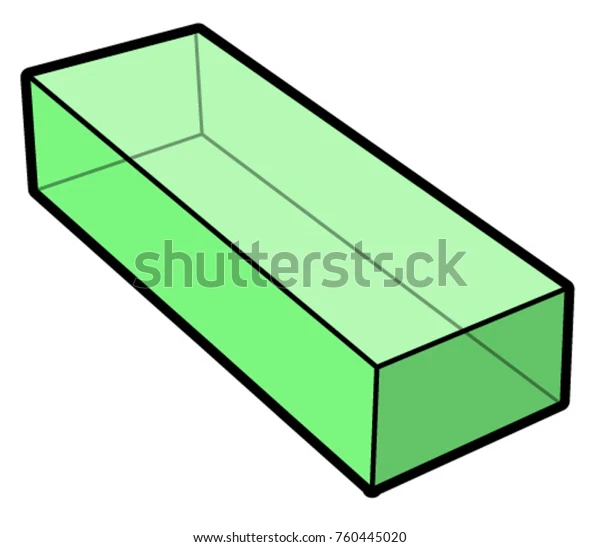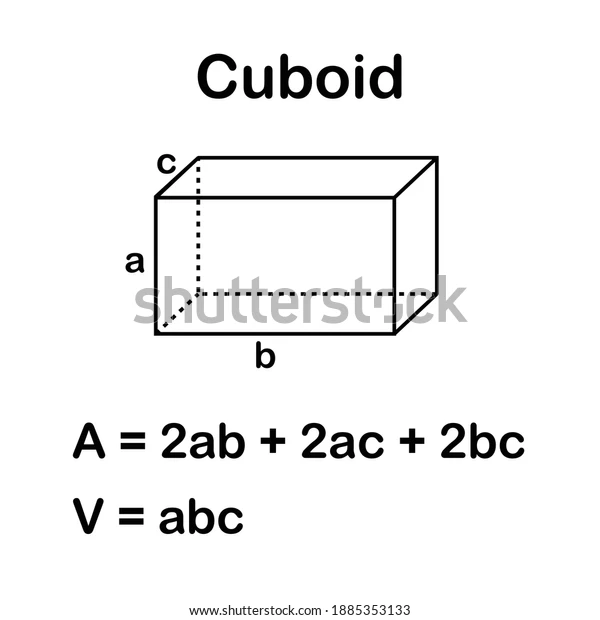How Many Corners Does a Cuboid Have
Introduction
Solids with three dimensions, such as length, breadth, and height, are referred to as three-dimensional shapes or 3D(three-dimensional) shapes. The only dimensions of 2D(two-dimensional) shapes are length and breadth. In everyday life, three-dimensional things like a gas cylinder, football, closet, etc. are examples.
There are two categories of geometry: solid geometry and plane geometry. Lines, curves, polygons, and other flat shapes that can be drawn on paper are the focus of plane geometry. Solid geometry, on the other hand, deals with three-dimensional objects like cylinders, cubes, spheres, etc.
What is a Cuboid?
A cuboid is a three-dimensional geometric figure that is bounded by six rectangular faces. It is also known as a rectangular prism. The term "cuboid" comes from the Latin word "cubus," meaning cube, and the Greek word "eidos," meaning form or shape.
A cuboid has eight vertices, twelve edges, and six rectangular faces. The opposite faces of a cuboid are congruent, meaning they have the same size and shape. Each face of a cuboid is a rectangle, with two sides of equal length and two sides of equal width. The length(l), width(w), and height(h) of a cuboid are its three dimensions.
To find the surface area of a cuboid, you can calculate the area of each of its six faces and add them together. The formula for the surface area of a cuboid is:
Surface Area = 2lw + 2lh + 2wh
where l, w, and h are the length, width, and height of the cuboid, respectively.
The volume of a cuboid is the amount of space it occupies and can be found by multiplying its length, width, and height. The formula for the volume of a cuboid is:
Volume = lwh

Cuboids are commonly used in everyday life, such as in packaging and architecture. For example, a box of cereal or a package of paper is typically shaped like a cuboid. In architecture, buildings often have cuboid-shaped rooms, such as offices, classrooms, and living spaces.
In summary, a cuboid is a three-dimensional geometric figure with six rectangular faces, eight vertices, twelve edges, and three dimensions - length, width, and height. It is commonly used in everyday life and is an essential shape in mathematics and geometry.
Lateral Surface Area of a Cuboid (LSA) in sq. units=2h(l+w)
Total Surface Area of a Cuboid (TSA) in sq. units=2lw + 2lh + 2wh
The volume of a Cuboid (V) in cubic units= lwh
Corners/Vertices, Faces and Edges
A corner or a vertex is the point where two or more straight lines or segments meet or intersect to form an angle with the respective segments in a 2-D shape and the dimension in a 3-D solid.
A solid's face refers to each individual flat surface. Solids have multiple faces.
An edge is a line segment that serves as a junction between two faces. It is also sometimes referred to as the line segment that connects two vertices.

Applications for Admissions are open.
As per latest syllabus. Physics formulas, equations, & laws of class 11 & 12th chapters
JEE Main Important Chemistry formulas
Get nowAs per latest syllabus. Chemistry formulas, equations, & laws of class 11 & 12th chapters
JEE Main high scoring chapters and topics
Get nowAs per latest 2024 syllabus. Study 40% syllabus and score upto 100% marks in JEE
JEE Main Important Mathematics Formulas
Get nowAs per latest syllabus. Maths formulas, equations, & theorems of class 11 & 12th chapters